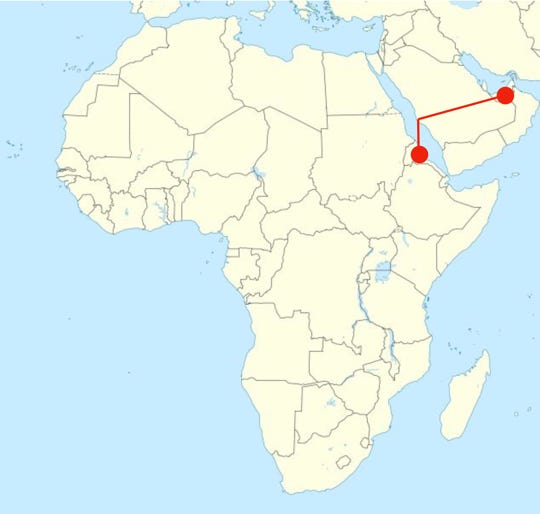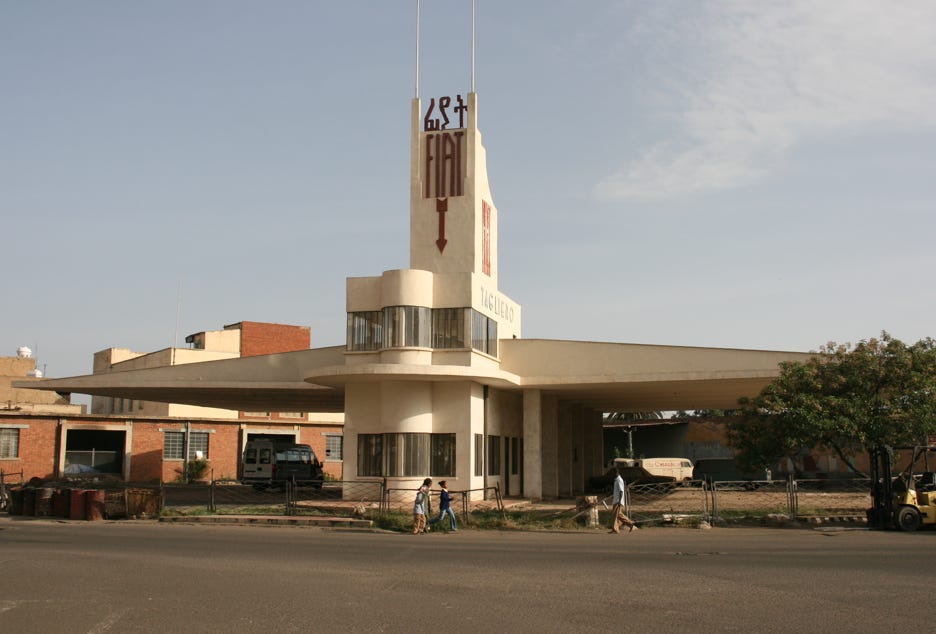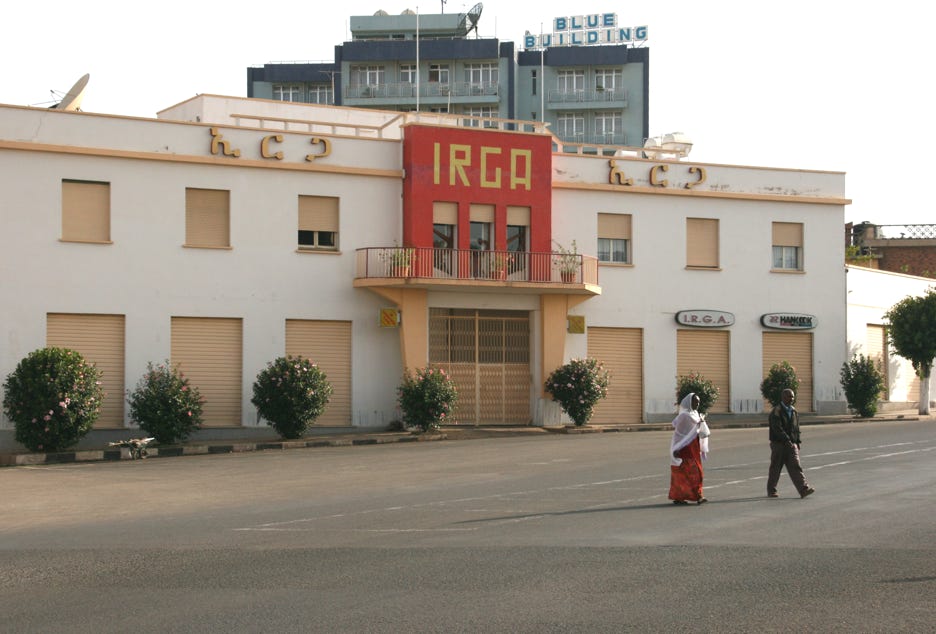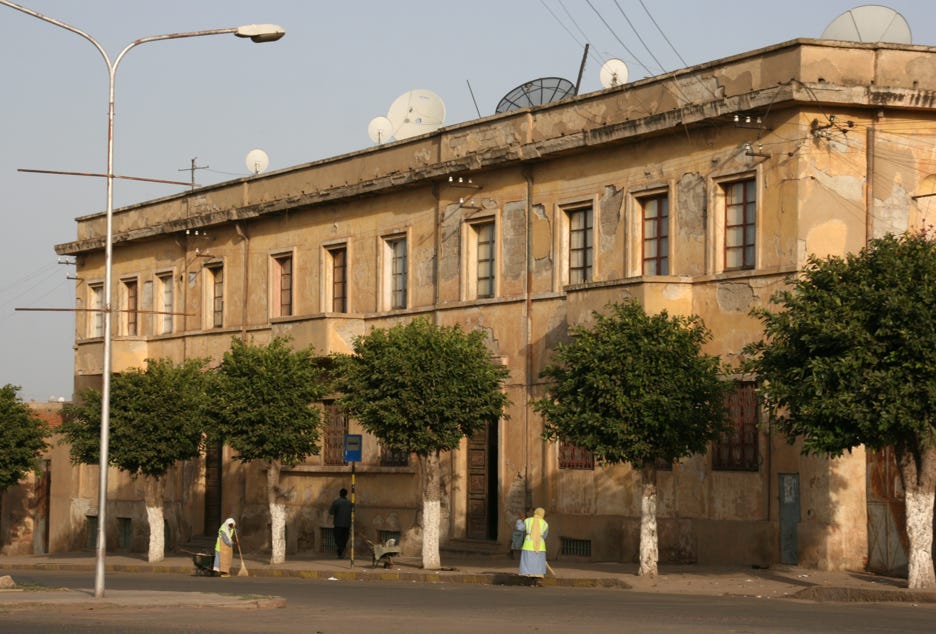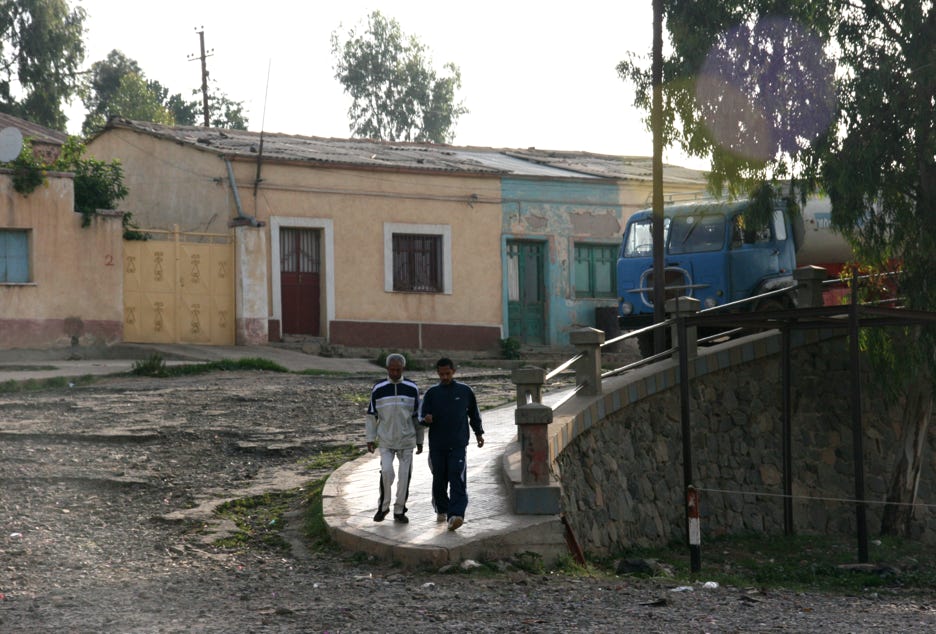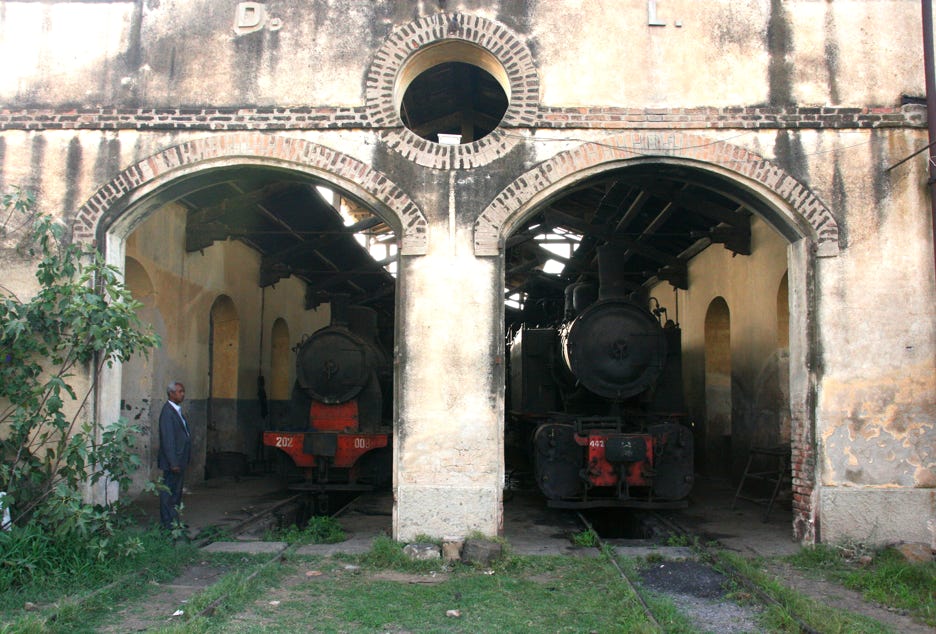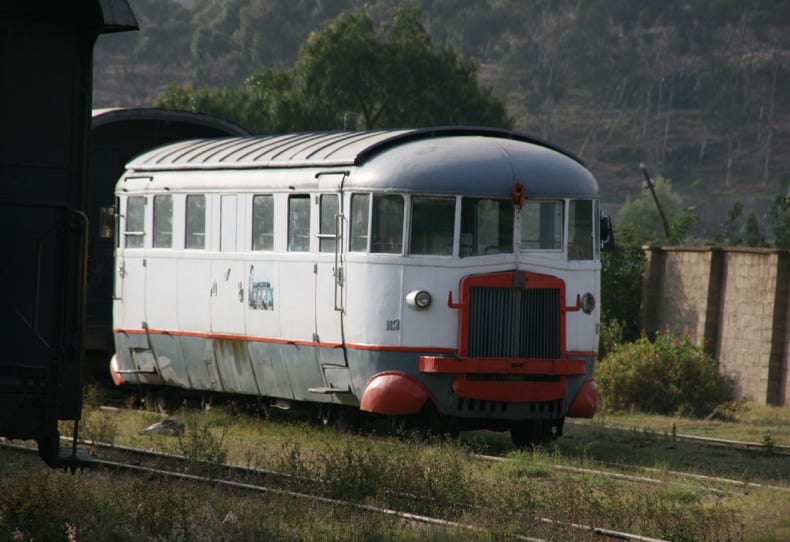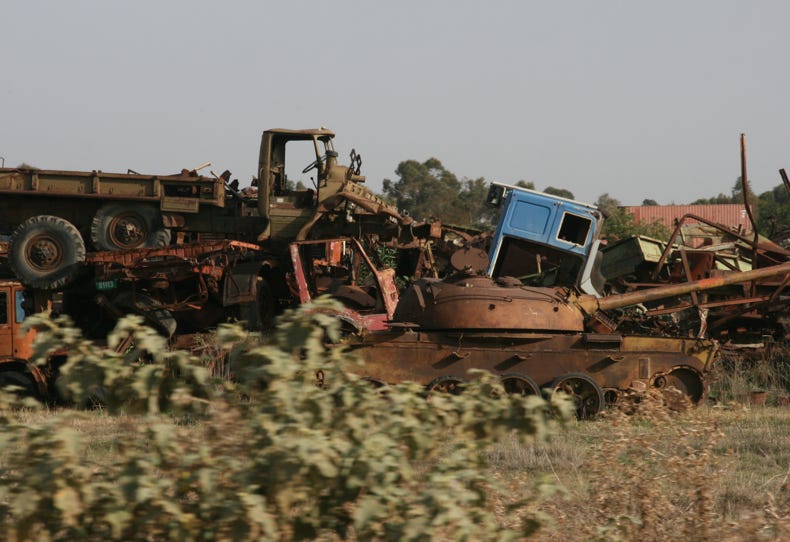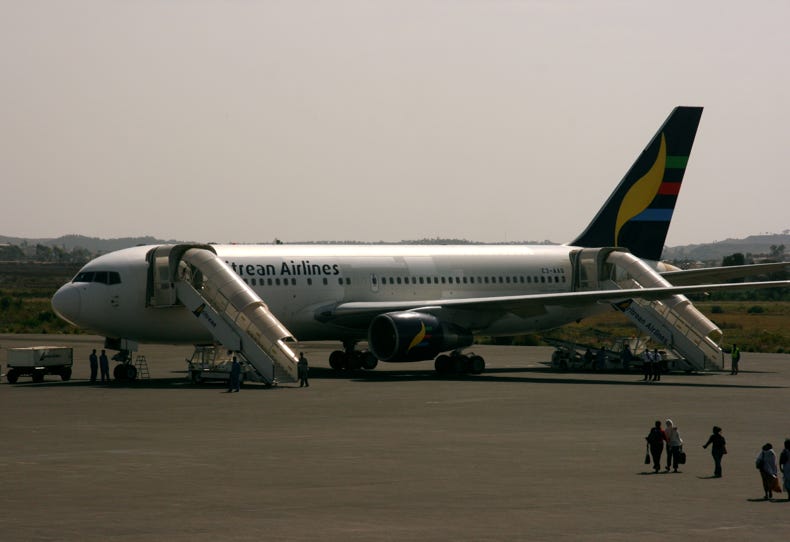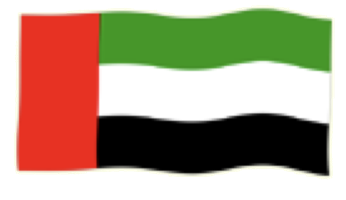

Last night was not a great night for catching up on sleep. By the time I had finished making the hotel booking in Dubai for our unexpected diversion and downloaded photos for the day, it was just after 1:00 am when I finally got to bed. The alarm sounded at 5:30 am as we were being collected early in order to get to the airport. Four and a half hours of sleep is certainly sub-optimal when you have to face the rigours of Asmara Airport. We were due to fly at 10:00 am, and as they require that departing passengers check-in two and a half hours before departure, we were due at the airport at 7:30 am.
We had an early breakfast that was quite a different experience to yesterday’s breakfast - this morning we were there well before the flies, but also before most of the food. Haile, our taxi driver, came to collect us at 7:00 am in his little yellow taxi, and stating quite categorically that we only needed to be at the airport by 8:00 am, took us on a circuitous drive to show us the key highlights of Asmara that we had not had time to see the previous day because we had driven to Massawa.
Fortunately, Asmara has very few highlights as such – its charm lies in its general ambience. Our first stop was the railway station where some old steam locomotives are stored. We then drove through the city to see some of the (sadly deteriorating) art deco buildings that had been constructed by the Italian Fascists during the period of occupation.
Perhaps Asmara’s most famous art deco landmark is the Fiat Tagliero Building (see today’s top photo). The Lonely Planet guide expresses its significance within Asmara’s architectural wonders with the sentence “Don’t even think of leaving town until you’ve seen the Fiat Tagliero Building”, adding that it is “perhaps the most outstanding (building) in Asmara”. The cynical might claim that this is indeed an accurate statement, and one that says more about Asmara in general than the Fiat Building itself. It was built in 1938 and is designed to look like an aircraft, with the central tower resembling a cockpit and the two huge unsupported awnings resembling wings. Almost next door was another of Asmara’s top art deco buildings, the Irga Building, which is regarded as being so outstanding that it features on many postcards of Asmara.
After driving past a huge scrapyard of vehicles and machinery destroyed during the war of independence with Ethiopia, we arrived at the airport, as expected, at a little after 8:00 am. The two hours we allowed for check-in were sufficient, and happily the bureaucratic processes involved with departing, while still excessive, took a fraction of the time of the processes we had encountered upon arrival. Still, four separate people were involved in the stamping and inspection of passports, a new set of currency declaration forms had to be duly completed (but were never looked at), and the security inspection included turning on laptop computers, taking off shoes and belts, and so on.
The flight from Asmara to Dubai was on a very old Boeing 767-200 operated by Eritrean Airlines. The plane had a very patchy paint job that didn’t really inspire confidence, and although the angle of lighting at the time wasn’t great, you may be able to see what I mean if you click the picture of the plane shown below. Not only was the plane very old, but it was also very full, highlighting Andrew’s and my good fortune in securing seats out of Eritrea.
The plane made an unannounced transit stop in Jeddah (Saudi Arabia) for refuelling. The plane was parked out in a remote space well away from the terminal, and no passengers disembarked or embarked. Presumably the cheap fuel available in Saudi Arabia was sufficiently attractive to the airline for them to choose to make a considerable diversion from the direct route (see map above) to get the cheap fuel.
Dubai was an extraordinary place to come into after the relative hardships and discomfort of travelling in Africa. Abundant energy, reliable lighting, air conditioning, good infrastructure, internet access, hot water – these were all things that we no longer took for granted. We checked into our hotel, and after a couple of hours enjoying ‘normal’ internet access speeds, we walked to a small nearby restaurant, the Grand Abu Shakar, and enjoyed a great meal of soup, grilled chicken and ice cream.
Hopefully, we can catch up on sleep tonight, as the last couple of nights have been somewhat sleep-deprived. We need to be ready early tomorrow morning to finalise arrangements for our flights from Dubai to Djibouti.
